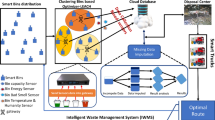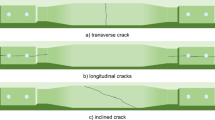Abstract
Introduction
Segmenting affiliated facilities from the point cloud is the key of 3D identification of the equipment.
Methods
This paper proposes a method to segment an equipment’s base from the equipment according to the change trend of the horizontally-projected areas of the layers formed by layering the equipment, thereby reducing the workload of manual segmentation of the base and improving the efficiency of intelligent identification of substation equipment. At the same time, the paper improves Iterative Closest Point (ICP) algorithm by using ICP error to jump out early of the iteration process of ICP, to reduce the iteration steps and shorten the matching time.
Results
The experimental results show that the identification rate of substation equipment is greatly improved by the base segmenting algorithm.
Conclusion
The improved ICP algorithm significantly shortens the identification time, and has little impact on the identification rate.




















Similar content being viewed by others
References
Yang T et al (2017) On the modeling and analysis of communication traffic in intelligent electric power substations. IEEE Trans Power Deliv 32(3):1329–1338
Baek H, Chung Y, et al (2017) Segmentation of group-housed pigs using concave points and edge information. In: International conference on advanced communication technology IEEE, pp 563–565
Sun L, Suo X, Liu Y et al (2016) 3D modeling of transformer substation based on mapping and 2D images. Math Probl Eng. https://doi.org/10.1155/2016/9320502
Chen D, Zhang L et al (2014) A methodology for automated segmentation and reconstruction of urban 3-D buildings from ALS point clouds. IEEE J Sel Top Appl Earth Obs Remote Sens 7(10):4199–4217
Zhou Y, Wang D et al (2014) A fast and accurate segmentation method for ordered LiDAR point cloud of large-scale scenes. IEEE Geosci Remote Sens Lett 11(11):1981–1985
Zhang Z, Li Y, Wang J (2016) LiDAR point cloud registration based on improved ICP method and SIFT feature. In: IEEE international conference on progress in informatics and computing IEEE, pp 588–592
Yin H, Yang X, He C (2016) Spherical coordinates based methods of ground extraction and objects segmentation using 3-D LiDAR sensor. IEEE Intell Trans Syst Mag 8(1):61–68
Shin MO, Oh GM, Kim SW et al (2017) Real-time and accurate segmentation of 3-D point clouds based on gaussian process regression. IEEE Trans Intell Trans Syst 18(12):3363–3377
Zhengge H, Chen J et al (2009) Triangulated irregular network based chunk gridding algorithm for terrain rendering. J Zhejiang Univ 43(10):1939–1944
Yuan XC, Wu LSH et al (2015) Feature preserving point cloud simplification. Opt Precis Eng 23(9):2666–2676
Guo W, Ji Y, Luo Y, Zhou Y (2017) Substation equipment 3D identification based on KNN classification of subspace feature vector. J Intell Syst. https://doi.org/10.1515/jisys-2017-0272
Demaret L, Iske A (2006) Adaptive image approximation by linear splines over locally optimal Delaunay triangulations. IEEE Signal Process Lett 13(5):281–284
Besl PJ, Mckay ND (1992) A method for registration of 3D shapes. IEEE Trans Pattern Mach Intell 14(2):239–256
Chen Y, Medioni G (1992) Object modeling by registration of multiple range images. Image Vis Comput 10(3):145–155
Bergevin R et al (1996) Towards a general multi-view registration technique. IEEE Trans Pattern Anal Mach Intell 18(5):540–547
Rusinkiewicz S, Levoy M (2002) Efficient variants of the ICP algorithm. International conference on 3-D Digital imaging and modeling, Quebec City, Canada
Yang J, Li H, Campbell D, Jia Y (2016) Go-ICP: a globally optimal solution to 3D ICP point-set registration. IEEE Trans Pattern Anal Mach Intell 38(11):2241–2254
Acknowledgements
This work was supported by Industry-Uni.-Research Collaboration Project of Henan province (Grant no. 152107000058), Young Teacher Foundation of Henan province (Grant no. 2015GGJS-148), and the Science and Technology Key Project of Henan province (Grant no. 152102210036).
Author information
Authors and Affiliations
Corresponding author
Rights and permissions
About this article
Cite this article
Wang, P., Luo, Y. & Guo, W. Study of Base Segmenting Algorithm of Substation Equipment Based on 3D Point Cloud. J. Electr. Eng. Technol. 14, 505–517 (2019). https://doi.org/10.1007/s42835-018-00008-6
Received:
Revised:
Accepted:
Published:
Issue Date:
DOI: https://doi.org/10.1007/s42835-018-00008-6




